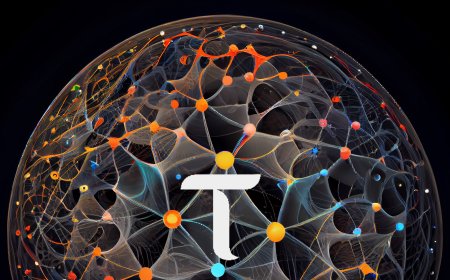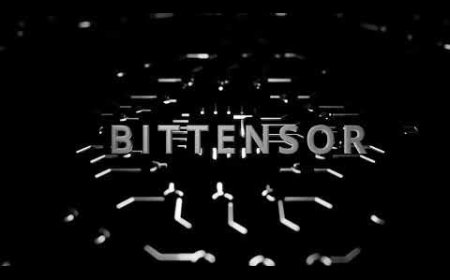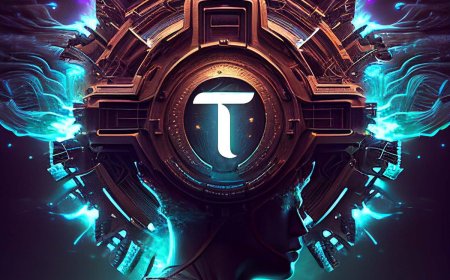Comprehensive Overview of BitTensor Subnet Development: Updates, Challenges, and Future Directions
BitTensor continues to make waves in decentralized computing, and its subnet development is at the heart of this progress. In this article, we delve into exciting updates, challenges, and future directions of subnet development within the BitTensor ecosystem.

Introduction
BitTensor continues to make waves in decentralized computing, and its subnet development is at the heart of this progress. In this article, we delve into exciting updates, challenges, and future directions of subnet development within the BitTensor ecosystem. From the latest innovations to ongoing hurdles, the journey to optimize subnet performance for miners, validators, and users alike is detailed below.
Exciting Updates from the Subnet
BitTensor is seeing significant progress with its subnet projects. Recent updates reflect a push towards real-world applications, with new methods being tested and subnet registrations spiking. Collaboration is a key factor, as developers and miners work together to improve efficiency and model output, especially in sectors like 3D generation. Caro, a key member of the community, has been excited about the role that subnet 29 is playing, as it pivots from NeRF models to Gaussian Splats for better 3D model quality.
Test Net Discussions
There has been a growing conversation in the community about the role of test nets. While some miners are hesitant to run operations on test nets, preferring to wait for official subnet registrations, others see it as an opportunity to get a head start. Early adopters could potentially gain an advantage by becoming experts on new subnets before they fully launch. Collaboration during the test net phase ensures a smooth transition to a live network once the subnet is ready.
Subnet 19 Architecture and Innovations
One notable development is the unique architecture being introduced in subnet 19. This subnet is pushing boundaries by maximizing requests per second from miners, focusing on tasks such as text-to-image generation, upscaling, and in-painting. Validators are also evolving, becoming gateways to the network and allowing users to access BitTensor without knowing the technical details. This architecture is part of the long-term vision to create an open-source framework that can be adopted by other subnets, addressing criticisms around BitTensor’s value proposition.
Validators, Miners, and Emission Models
The relationship between validators and miners is pivotal in subnet development. Validators can now sell bandwidth, creating a marketplace where they derive real-world monetary value. Validators prioritize specific miners based on their share of total delegations, driving competitiveness in the ecosystem. For subnets to succeed, developers must ensure that emission models are fair and attract enough validators and miners within the crucial first week.
Incentives and Collaboration in Subnet Development
BitTensor fosters both competition and collaboration. While subnet creators are competing for resources and emissions, they are also learning from one another. This cross-pollination of ideas leads to better innovations and improved models. Some subnets are geared toward model training, while others are focused on user-end tasks like inference and storage, but the core goal remains creating long-lasting value.
Challenges with Subnet Registration and Emissions
Subnet registration is a hot topic within the BitTensor community, with spikes in registrations and rapid deregistrations becoming a trend. Some validators have even developed scripts to automate the process and secure favorable emissions, which has sparked debate over fairness. There are ongoing discussions about how to reset emissions and manage the competitive dynamics of subnet launches to prevent exploitation.

Dynamic Tower and Emission Control
The introduction of Dynamic Tower is a promising solution to some of the issues surrounding subnet churn and emission allocation. This mechanism could help reset emissions and manage the increasing number of subnets, allowing the network to scale more effectively. Validators are closely watching how this will impact their roles and emissions control, as the workload increases with each new subnet added to the network.
Future Outlook for Subnet Growth and Sustainability
The future of BitTensor’s subnets looks promising, but there are challenges to overcome. The competition for subnet registration slots is intensifying, with a limited number of available spots. As new subnets are registered, they must offer compelling advantages, such as higher emissions or specialized models, to outshine the existing ones. This competitive environment ensures that only the most valuable and functional subnets will survive.
Validator Access and Management Strategies
A recurring suggestion is to reserve subnet spots for validators during the first 24 hours of registration. This would give them a fair chance to join a subnet before it becomes highly competitive. Additionally, there is an increasing need for better management tools for validators. Automated updates and Docker support could reduce the overhead, allowing validators to focus on optimizing their subnets rather than managing the complex infrastructure.
Expanding the BitTensor Ecosystem
As BitTensor continues to grow, there is speculation about the impact of increasing subnets beyond the current limit. This would lead to greater competition and potentially higher emissions. However, it also raises questions about sustainability and the value of tokens within each subnet. A higher number of subnets could dilute token value, especially if those subnets fail to create real-world value or innovative use cases.
Community Funding and Project Support
Community-driven projects are another essential component of BitTensor’s future. Validators and subnet developers can propose projects for funding, but securing initial funds remains a challenge. Opening up the ecosystem to new proposers and providing more accessible funding mechanisms could encourage greater participation and innovation within the network.
Conclusion: The Road Ahead for BitTensor
As BitTensor's ecosystem evolves, the development and management of subnets remain central to its success. The ongoing innovations, from better subnet architectures to improved emission models, demonstrate the community’s commitment to enhancing decentralized computing. However, challenges such as subnet registration, validator management, and emission control still require attention. The future holds exciting possibilities, with the potential for BitTensor to become a leading platform in decentralized AI and computing.
By focusing on collaboration, innovation, and value creation, BitTensor is well on its way to revolutionizing the decentralized computing landscape.
Source : @The Bittensor Hub.















